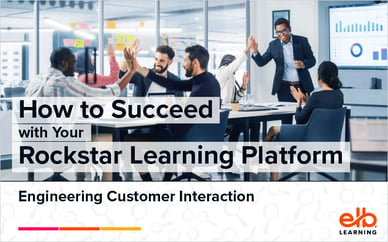Is it time to break up with your LMS?
Your business needs are constantly changing, and your learning platform should grow with you.
You don’t have to stick with the same, dated interface and stale content delivery system you bought 15 years ago. If you’re considering switching to a new learning platform, we can help.
Identify Why You Want to Switch Your LMS
Understanding why you want to switch to a new LMS will help you explain to your stakeholders, and to potential new vendors, what you need that you’re not getting.
It could be as simple as your current vendor is sunsetting the learning platform and you HAVE to switch. Or perhaps your LMS isn’t living up to your expectations and you need different features and functionality. Another possible reason for switching your LMS is customer support. If you’re not getting the service and support you need, you should find a vendor that’s a better fit.
Reasons to Switch to a New LMS
1. Vendor is sunsetting your current platform
2. Platform is not living up to your expectations, for example:
- Poor user experience
- Poor reporting
- Lack of integrations
3. Customer support is not there
If you’re thinking about making a switch, we can help! Contact us for a free trial or personalized demo of our Rockstar Learning Platform.
Here are 3 more key things to keep in mind when you’re considering switching to a new LMS:
Identify Your “Must-Have” Features in a New Platform
Think about why you chose your current platform, if you were the one who chose it. What were the initial features that drew you to it? If you weren’t in this role when your organization chose an LMS, find out as much information as you can about what the goals were when it was originally implemented. Are those features you need in your next LMS/LXP, or did the organization’s needs turn out to be different once you started using the platform?
Some common learning platform use cases today include easy video management, mLearning delivery, and user-generated content options. And as a direct result of the pandemic, many organizations have made virtual onboarding and virtual instructor-led training priorities today.
Knowing these reasons and current business needs will help you evaluate potential new learning management platforms.
Migrating Content and Users
Making sure you get all your user data and courses moved over should be a collaborative process between you and your new vendor. It’s critical to understand the technology requirements of your new LMS, what file types are compatible, and what kind of support you’ll receive for the migration.
Cost
Ask about setup fees, if there are extra costs for personalization and integrations and any additional expenses that might arise. You’ll also want to be able to show stakeholders how your organization will benefit from a new LMS—what your return on investment will be.
While this might seem overwhelming, switching your LMS can be a great opportunity to re-evaluate how your training program is going and update or innovate to ensure you’re still meeting your learners’ needs.
We want to help you rock your learning and development goals!
Contact us for a free trial or personalized demo of our Rockstar Learning Platform.








